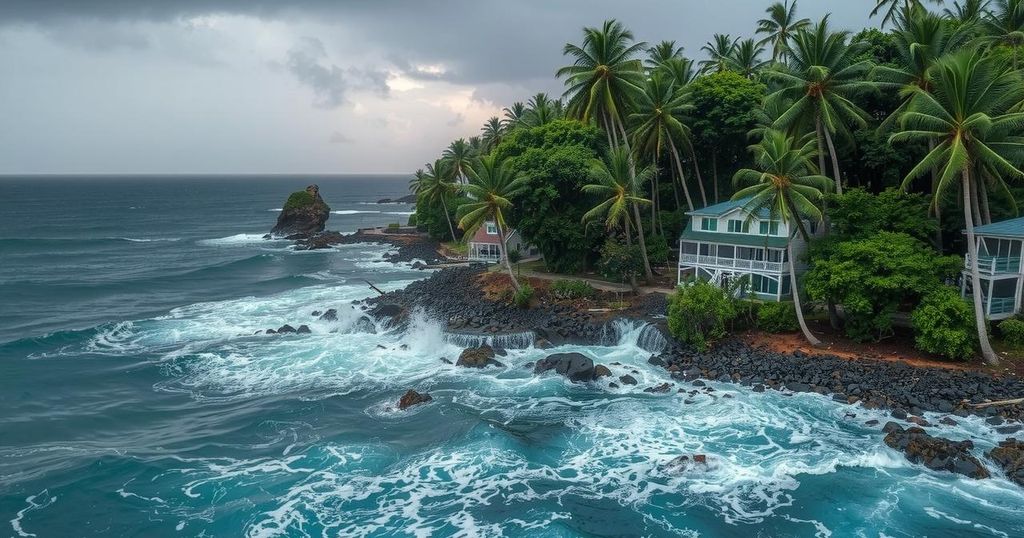Mayotte Faces New Storm as Recovery Efforts Continue Post-Cyclone

Mayotte has been hit by Tropical Storm Dikeledi just weeks after Cyclone Chido caused at least 39 deaths and left over 200 missing. A red alert has been issued due to risks of flooding and landslides, prompting residents to stay indoors. Emergency measures and military assistance are being mobilized as the region copes with the ongoing severe weather.
Mayotte has been struck by another tropical storm, Dikeledi, mere weeks after Cyclone Chido caused significant devastation in the region. Following Cyclone Chido on December 14, which resulted in at least 39 fatalities and left over 200 individuals missing, the islands began their recovery process just as they faced yet another severe weather event. Reports indicated localized flooding on Saturday, prompting authorities to issue a red alert urging residents to remain indoors or seek appropriate shelter. Meteorological data revealed that Dikeledi produced heavy rainfall and strong winds despite the storm’s center passing approximately 100 kilometers south of the archipelago, according to Meteo-France.
In the wake of Dikeledi, Mayotte’s officials alerted citizens of the heightened risk of flooding and landslides, with the red alert remaining active until Monday evening. The National Gendarmerie’s recent communications included images of military forces dispatched to remove fallen trees and restore access. One notable incident involved the flooding and extensive damage sustained by the southern village of Mbouini, which had previously avoided the devastation wrought by Cyclone Chido. Consequently, the government has established cyclone shelters in schools and community centers, while the international airport remains closed due to prior damage from the cyclone.
In a move indicative of the serious nature of the current situation, emergency personnel, as well as security forces, have been fully mobilized in preparation for the impact of Dikeledi. Much of the immediate response efforts are concentrated on the shantytowns surrounding the capital, Mamoudzou, and other areas severely affected by Cyclone Chido—the most catastrophic cyclone to strike Mayotte in 90 years. Despite the extensive response capabilities, officials have expressed challenges in documenting the full extent of fatalities from Cyclone Chido, largely due to the status of many victims as undocumented migrants and the traditional Muslim practice of swift burial within a day of death.
Mayotte, located in the Indian Ocean between Madagascar and Mozambique, is a region that experiences tropical storms and cyclones due to its geographical positioning. The recent history of adverse weather events highlights the vulnerabilities of this archipelago, which is one of the poorest territories in the European Union. Cyclone Chido was particularly devastating, marking a historical low point in terms of fatalities and damages. The government’s response to these tragedies is often scrutinized by the local population, which has previously voiced concerns over perceived neglect by the French government.
In summary, Mayotte is currently facing significant challenges as it grapples with the repercussions of a recent tropical storm shortly after the devastation caused by Cyclone Chido. With ongoing flooding and the implementation of emergency measures, local authorities continue to prioritize the safety of residents. As the situation evolves, understanding the impact on both the community and the government response will be crucial in future recovery efforts.
Original Source: news.sky.com








